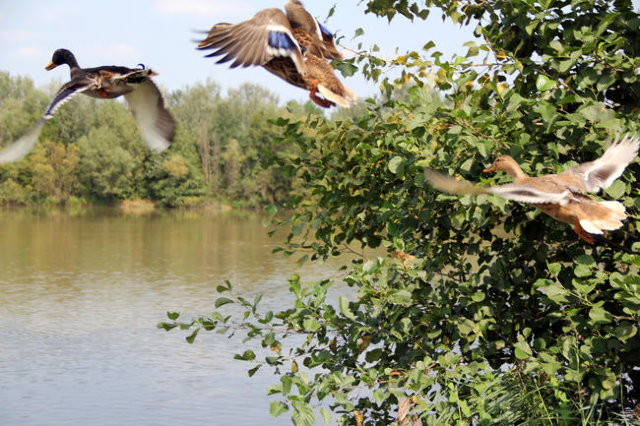Even a dog knows game bird hunting season has been bountiful

Fall 2006 was a banner hunting season for upland game bird hunting in Southern Nevada.
From the Tule Desert on the east to the town of Beatty on west, and from there to the southernmost tip of Nevada, birds seemed to be everywhere. One couldn’t go for even a short walk somewhere in the desert without jumping at least one covey of Gambel’s quail. Perhaps Opening morning that year was one that I will not soon forget, and it was one that I would like all of us to experience. Whether again or for the first time it doesn’t matter, and preferably sooner than later.
Though Maddie and I left town later than planned, there still seemed to be plenty of darkness between us and sunrise. That was my hope anyway because I wanted to be in place by legal shooting time. Unfortunately, the clock and sunrise both worked against us. By the time we reached Searchlight it was already daylight and the truck’s clock showed we were nearing legal shooting time. There was no way we would make our destination by then.
“Oh well,” I thought. “Better late than never.”
We turned west on the Nipton Road, and with Searchlight fading in the rearview mirror made our way toward Crescent Peak. Suddenly Maddie began barking and whining. She wanted out of her kennel, and she wanted out now. Then just as I touched the brake and began to pull over, a large covey of quail flew across the road in front of us and landed near an abandoned building off the road a ways.
“So, that’s why you got a little crazy,” I said to Maddie, half expecting her to answer.
She waited impatiently, wagging her long black tail and looking from me to the desert across the road and back again. There were birds to be had and she wasn’t too keen about waiting for me to don my vest and slide shells into my shotgun.
We crossed the road and I barked the command for which Maddie had been waiting.
“Find the bird!”
With her tail swinging side to side, Maddie worked back and forth across the wash. Suddenly she slowed, put her nose to the ground and flushed a handful of quail from a tuft of grass that seemed too small to hide a single bird. A couple of shots later I had a pair of quail in my vest. And so it continued.
By 8 o’clock that morning Maddie’s work was done and we had a full limit of quail on ice. What a morning. Maddie is gone now, but when I stop long enough to remember that morning a smile comes to my face. Though she was never really the best hunting dog, Maddie was a good hunting companion. However, that morning she was better than good.
In the years since we shared that hunt, the effects of a 15-year drought have completely changed the dynamic of upland bird hunting in Southern Nevada. For the time being, the days of huge coveys are gone. The birds that are out there are tough to find, and when you do find them they are going to test the best of us. Though we have had some good rains here and there, the precipitation just hasn’t come when we need it most, and that is now.
Rains that fall from November through February are those that bring green up to the desert, the vegetation that will provide food for nesting birds and their chicks later in the spring.
Summer rains may fill guzzlers with water, but the birds also need groceries on the ground.
I had a great visit with an old timer this week, a man who grew up in Las Vegas and earned his hunting stripes pursuing Southern Nevada’s quail and waterfowl. He shared some of his hunting memories, then we spoke of drought and quail populations. As we neared the end of our conversation, he reminded me that no matter how tough things get, there are always birds somewhere. And when the rains return, so too will the days of plenty and large coveys.
According to the National Weather Service, the El Niño weather pattern is expected to bring “Wetter-than-average conditions most likely in the Southern Tier of the United States, from central and southern California, across Texas…” and on to points east this winter. If that forecast holds true, we could see habitat conditions this spring that favor upland game birds, rabbits and other critters. If that occurs, and we are favored with a repeat next winter, 2017 could be another banner year.
I wonder if Santa has any pull?
Freelance writer Doug Nielsen is a conservation educator for the Nevada Department of Wildlife. His “In the Outdoors” column, published Thursday, is not affiliated with or endorsed by the NDOW. Any opinions he states in his column are his own. He can be reached at intheoutdoorslv@gmail.com.












